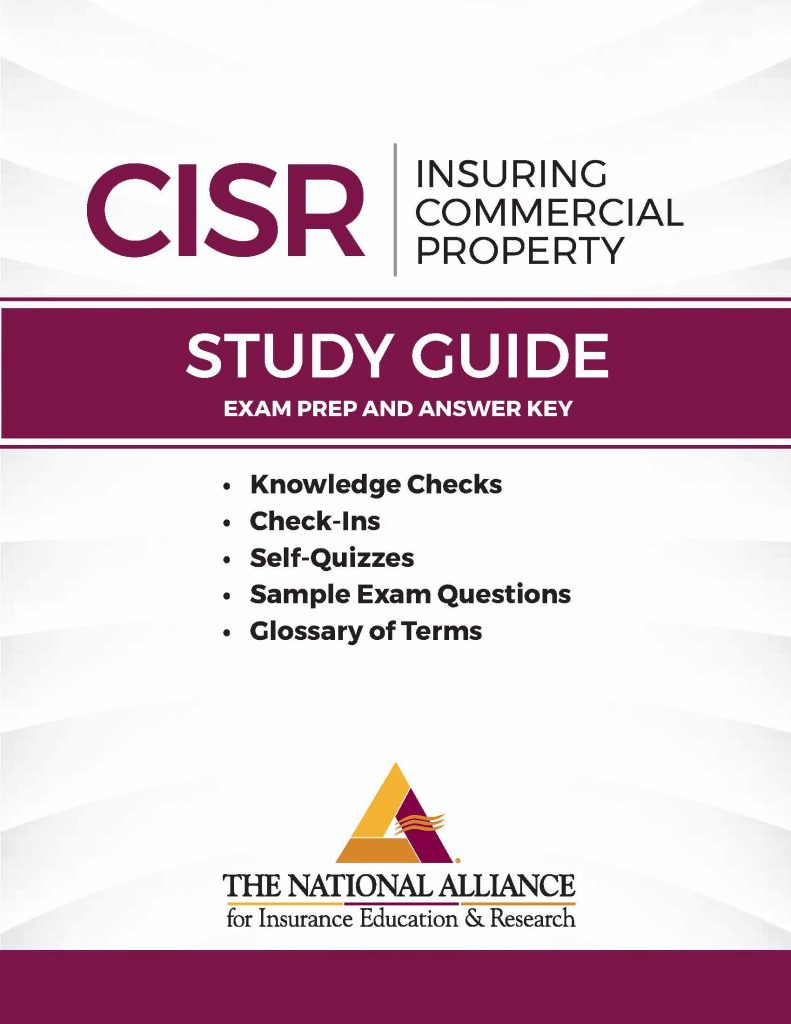This Study Guide has been prepared to enhance your learning experience. It contains all of the Check-In questions, Knowledge Checks, and Self-Quizzes contained within the course, along with an Answer Key and Glossary. Use it as a tool to help practice and assess your knowledge of the course material, but do not mistake it for a comprehensive “short-cut” to preparing for the final exam.
Be sure to take a look at the Appendix that follows the Answer Key in this Study Guide. It contains valuable suggestions for test preparation and study techniques, as well as some sample exam questions and a glossary of terms.
Your path to success in passing the final exam will come from your attentiveness during the course and the effort you put into preparation.
Study Set
Use this study set to review digital flashcards and play interactive vocabulary games for the insurance & risk management terms found in the glossary of this course!

Review Game
Use this trivia-style review game to test your knowledge prior to taking the final exam for this course!
Section 1 – Fundamentals of Commercial Property Insurance
Types of Commercial Property
This video explains the difference between real property and personal property.
Insurable Interest
This video explains the concept of “insurable interest” and outlines who may purchase a property insurance policy.
Valuation Methods
This video explores the different methods of assigning a monetary value to insured property.
Coinsurance
This video describes the reason for coinsurance and demonstrates how the coinsurance formula applies after a loss.
Fluctuating Property Values
This video illustrates why many businesses may have fluctuating property values and how to insure the property accordingly.
Blanket Insurance
This video describes a method called Blanket Insurance for handling fluctuations in values and how it can be helpful but may also contain certain limitations.
Section 2 – The Building and Personal Property Coverage Form
What is "Building"?
This video explains how CP 00 10 defines “building.”
Additional Coverages vs. Coverage Extensions
This video compares the “Additional Coverages” and “Coverage Extensions” provisions of the Building and Personal Property Coverage Form.
Vacancy
This video explains the “Vacancy” provision of the Building and Personal Property Coverage Form.
Optional Coverage
This video spells out the four optional coverages contained within CP 00 10.
Section 3 – Causes of Loss Forms
Water Exclusion
This video clarifies the scope of the Water Exclusion contained within all three Causes of Loss forms.
Concurrent Causation
This video explains why certain exclusions have additional wording to prevent the insurer from having to pay for losses outside that fall outside the intent of the policy.
Limitations on Certain Property
This video spells out how the Causes of Loss – Special Form responds to specific types of property that are more adequately protected through other types of insurance.
Collapse
This video explains the purpose of the Collapse Exclusion contained in the Causes of Loss – Special Form and when coverage might apply.
Section 4 – Basics of Time Element Insurance
Business Income and Extra Expense
This video introduces the concept of time element coverages.
Business Income Options
This video illustrates how coinsurance is applied to time element coverages and explains the alternatives to using the coinsurance provision.
Extended Period of Indemnity
This video explains why the Extended Period of Indemnity endorsement may be added to the Business Income (And Extra Expense) Coverage Form.
Dependent Properties
This video illustrates how business income coverage can be applied to properties the insured does not own but depends upon to generate revenue.
Section 5 – Basics of Commercial Inland Marine Insurance
Inland Marine Overview
This video clarifies how inland marine insurance differs from a Commercial Property Policy.
Transportation Insurance
This video provides a high-level overview of the types of businesses that may need transportation insurance.
Bailee Coverage
This video provides a high-level overview of the types of businesses that need insurance for their bailee exposures.
